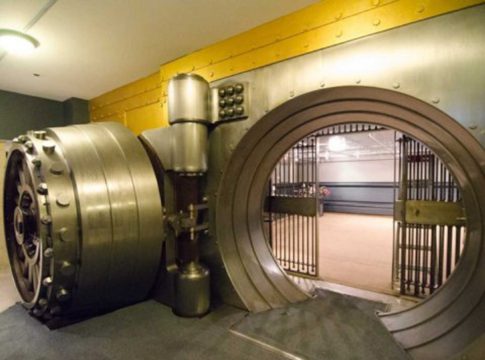Since the financial crisis, the global banking sector has been forced to cut down on its excesses, lending more conservatively and just generally taking on less risk. But where in the world has the safest banks?
Business Insider decided to take a look into the countries around the world with the safest banks, using the World Economic Forum recently-released Global Competitiveness Survey, which offers a bundle of indicators to show the health of a country institutions.
One of those is the perceived safeness of banks. WEF used its executive opinion survey to ask in general, “how do you perceive the soundness of banks?”
So the measure isn’t based on any objective economic or accounting measure, but rather by the perceptions of the population. The countries are ranked from 1 (banks need more money) to 7 (banks are generally sound).
The survey showed that people in the UK and US really don’t trust their banking systems after the 2008 financial crisis. The UK was ranked 59th and the US came in at 24th, below the likes of Guatemala, Panama, and Honduras. Check out the 16 countries with the safest banks below.
14. Malta: 5.9 — Capital buffers retained by local banks are among the highest in Europe, and Maltese banks have consistently returned solvency ratios that are almost double the EU average, a recent report on the country financial sector said.
14. Taiwan: 5.9 — While Taiwanese citizens are largely pretty happy with the soundness of their banks, earlier, in October, lender Far Eastern International Bank was subject to a hack in which $60 million was stolen.
14. Slovakia: 5.9 — Slovakian banks have a strong capital-adequacy performance, and a stronger funding position than their regional neighbours, with domestic deposits covering a larger share of loans, making banks less reliant on external funding, a 2015 report from the Economist Intelligence Unit said.
14. Panama: 5.9 — As the country has no central bank, Panamanian lenders are run conservatively, with capital ratios almost twice the required minimum on average. Traditionally seen as a tax haven, the country has made substantial strides to shake off that reputation since the financial crisis.
10. Switzerland: 6.0 — Famous as the home of Credit Suisse and UBS, two of the world’s most recognisable financial institutions, Switzerland has a reputation as a place for the ultra wealthy to keep their money. As a result of that, its banking system is seen as largely pretty sound.
10. Czech Republic: 6.0 — The Czech banking sector is unusual in that foreign-owned lenders dominate the industry, but consumers don’t seem to mind, ranking them the joint tenth safest in the world.
10. Guatemala: 6.0 — The densely populated Central American nation has three key players in its banking system — Banco Industrial, Banco G&T Continental, and Banco de Desarrollo Rural. All three are seen as being fairly sound, according to the WEF survey
10. Israel: 6.0 — Israeli banks are largely pretty sound, although in September this year, the country’s financial regulator ordered lenders to reduce their overseas operations and keep a closer eye on subsidiaries.
9. Luxembourg: 6.1 — It is no surprise that Luxembourg scores highly, as the country is famous for its financial sector. Its Banque et Caisse d’Épargne de l’État is often cited as one of the safest on earth.
7. Norway: 6.3 — As an oil-reliant economy, Norway has faced serious issues in recent years, although its state investment fund passed $1 trillion in value for the first time earlier in 2017.
7. Hong Kong: 6.3 — Another global financial centre, Hong Kong is home to arms of most of the world biggest banks, and some of the world safest financial institutions.
5. Singapore: 6.4 — Singapore is renowned as one of the world’s great financial centres, and the soundness of its banking sector reflects that.
3. Australia — A small group of four major banks divide up most of Australia’s banking sector, while foreign banks are tightly regulated, making sure the system is sturdy.
3. New Zealand — New Zealand banking sector is dominated by a group of five financial players. Decent profits and growth without too much competition has seen the sector thrive, and its position is broadly unchanged from last year.
1. Canada: 6.6 — Canadian banks have long been a byword for stability. The country has had only two small regional bank failures in almost 100 years, and had zero failures during the Great Depression of the 1930s. Last year, the country’s banks were seen as the third safest on earth, so confidence has clearly increased a little.
1. Finland: 6.6 — Finland banking sector is dominated by co-operative and savings banks, which take little risk.The country central bank governor, Erkki Liikanen has led the way on proposals to split investment banking and deposit-taking activities at European lenders.
Ranked first in 2016 list, Finland keeps its place at the top of the table this year.


